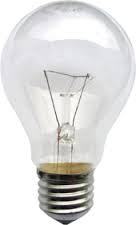Light-emitting diodes are the future of lighting. Just as the incandescent gave way to the compact fluorescent lamp (CFL) in our homes and offices, the CFL is yielding to the light-emitting diode. These are inherently slow processes given the number of bulbs that need to be replaced and the lifetime of those bulbs, but a tectonic shift is underway. In a few short years, the household incandescent will be a quaint thought, and CFLs will be looked upon as a misguided, poison-laced stepping stone.
We’re at the start of a revolution in home, commercial, and public lighting that will be the biggest shift in the sector since the development of the tungsten filament over 100 years ago. Solid-state lighting is the future and the LED is the engine moving it forward. In a few years the market will almost certainly have settled on LED bulbs (not entirely, but predominantly). Before then, the technology has a long way to go and we as consumers have a lot to learn.
An LED is just a source of light. How that light is generated—by running electrons through a semiconductor, resulting in a process known as electroluminescence—is fundamentally different than how the incandescent, filament-based bulb works. That our light is being provided by a semiconductor, not the heating of a material (electroluminescence vs. incandescence), is the key to the future of mankind’s light.
Good quality LEDs can provide excellent lighting in a range of household situations. LED lighting technology is developing rapidly and is already offering useful alternatives to some traditional lighting technologies such as downlights.
However there is significant variation in product quality. Some lower quality LEDs sold may not provide you with enough light, may flicker when dimmed, change colour through life or fail prematurely.
Currently LEDs are more expensive than traditional lamps and some may not be as energy efficient as the packaging claims. As a general guide the best LEDs currently available are approximately 4 to 5 times more efficient than the typical incandescent or halogen equivalent. For high quality LED products the expected lifetime is likely to be somewhere in the range of 20,000 to 40,000 hours. This can vary considerably depending on the product.
As LED products are still in their development stages it pays to be cautious and have a basic understanding of LEDs before investing in them. Quality LEDs are becoming available and buyers can find them if they know what to look for.
 Incandescent lamp
Incandescent lamp Compact fluorescent lamp
Compact fluorescent lamp